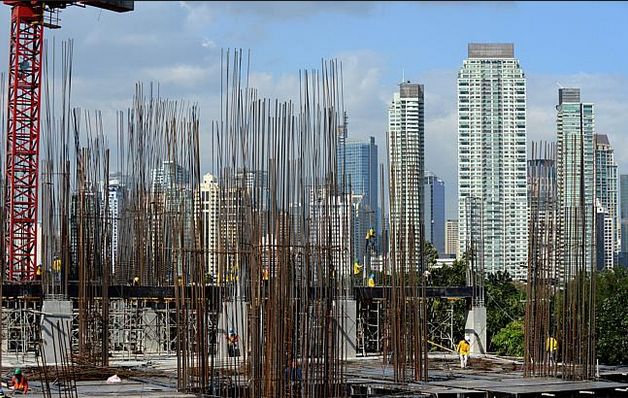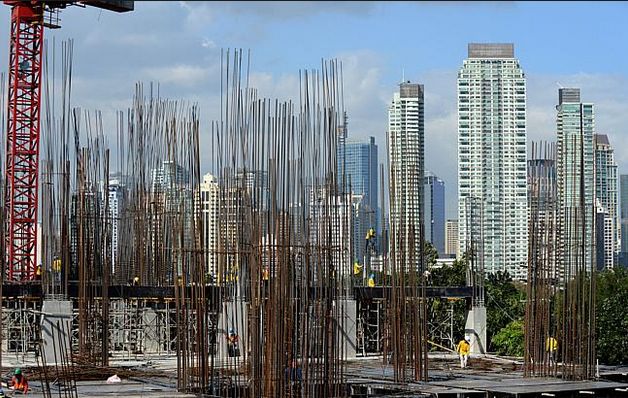PH economy seen hitting $1T by 2030

Date:
May 20, 2016
IF the new Administration continues to pursue economic reforms and strengthens institutional governance, the Philippines is poised to be a leading emerging market in Asia by 2030 with a $1trillion economy, US-based think tank IHS said in a study released Thursday.
In an analysis, Rajiv Biswas, Asia-Pacific chief economist for IHS, forecast that gross domestic product (GDP) will grow at an average pace of about 6 percent a year over the medium-term from 2016 to 2020.
The total size of the Philippines economy is projected to grow from $300 billion in 2016 to $700 billion by 2025, becoming a trillion-dollar economy in US dollar terms by 2030.
“This will make the Philippines one of the leading emerging markets in Asia,” Biswas said.
According to the IHS analysis, support coming from robust remittance inflows and information technology-business process outsourcing (IT-BPO) will continue.
Total IT-BPO industry revenue is estimated to reach $25 billion in 2016, with an additional 225,000 new jobs expected to be created in 2016, led by rapid growth in healthcare-related IT-BPO services.
Meanwhile, total remittances by overseas workers reached $25.8 billion in 2015, accounting for about 9.8 percent of GDP.
“If the incoming President and the new government administration can continue to pursue economic reforms and strengthen institutional governance, then GDP growth of around 6 percent per year can be sustained over 2016 to 2020,” Biswas said.
He stressed that despite the nation’s considerable economic progress under President Benigno Aquino 3rd, the next President and the incoming government will face tremendous economic challenges.
A key priority for the next government will need to be improving the business climate for investors, the economist said.
At present, the Philippines is ranked 103 out of 189 countries on The World Bank’s Ease of Doing Business Ranking for 2016.
Although the Philippines has lifted its position significantly on this ranking under President Aquino, from 136 in 2012 to 103 in 2016, the ranking of the Philippines is still far below some other Southeast Asian economies, notably Singapore, which is ranked first globally, Malaysia which is ranked 18th, and Thailand which is ranked 49th, he noted.
“Improving the business environment for foreign investment into manufacturing and infrastructure will be a critical challenge for the incoming Philippine government administration, in order to boost manufacturing exports and employment,” he added.
Biswas further said one of the more important economic priorities for the next government would be to tackle the high level of poverty that still persists in the Philippines.
An estimated 25.8 percent of the total population of the Philippines still live below the poverty line, and this ratio has only declined very gradually from a rate of 28.8 percent in 2006, he claimed.
Rural poverty in some regions is a key public policy challenge, the IHS economist said, stressing that these problems have been aggravated by current dry weather conditions because of the El Niño effect, which have resulted in severe drought in parts of the southern Philippines, resulting in food shortages and severe hardship for the rural population in some areas.
“Therefore, ensuring that the benefits of rapid economic growth do reach a wider share of the population will be a crucial policy priority for the next administration, and key strategies to reduce poverty will be to accelerate foreign investment inflows into manufacturing and infrastructure development,” he said.
Meanwhile, Biswas said increased investment in agricultural infrastructure and irrigation technology, as well as insurance schemes for farmers will help to boost rural incomes and mitigate risks associated with extreme weather events such as drought or typhoons.
“The next administration will also need to ensure that trade and investment liberalization are high priorities on its policy agenda, through bilateral and regional trade and investment initiatives with key partners such as the Asean+3 nations as well as the EU [European Union] the US and India,” he added.
Asean+3 is composed of 10 economies in the Association of Southeast Asian Nations, China, Japan and South Korea.

Source: http://goo.gl/P87Pmv














